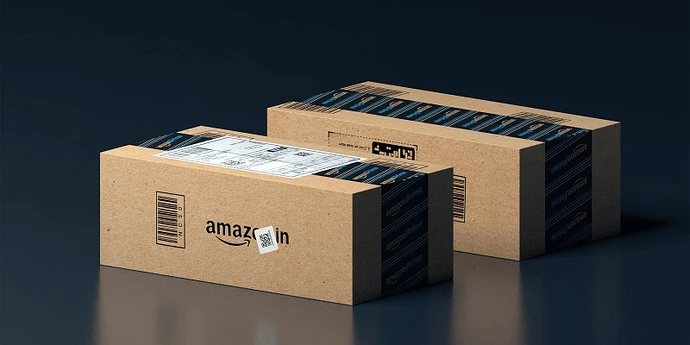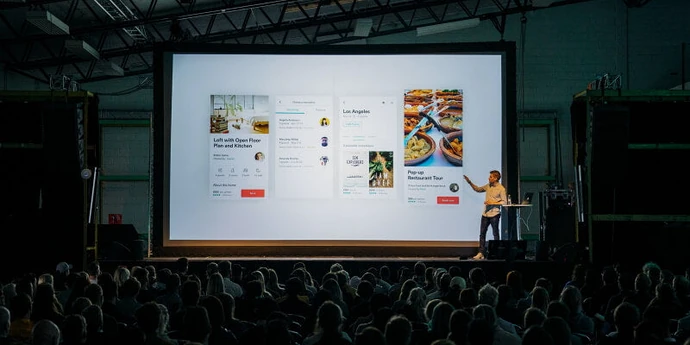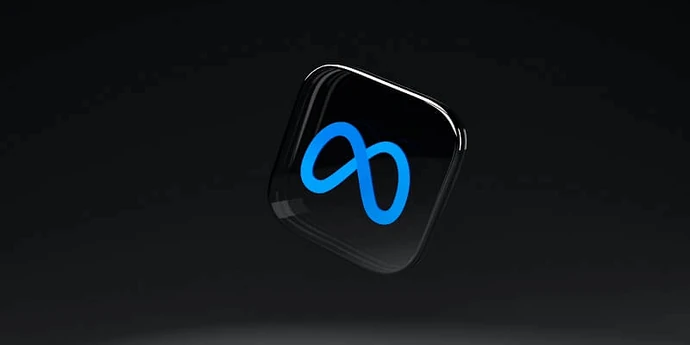If you’re looking to land an offer at Amazon, you may have heard or read about the Amazon Bar Raiser interview.
The Amazon Bar Raiser is an interviewer trained to ensure that every new hire at Amazon is “raising the bar”. They’re tough, but not impossible, to impress. Especially with the right preparation.
That’s why we’ve created this ultimate guide. To put it together, we talked with four Amazon Bar Raisers and reviewed real candidate reports and insider information from experts online.
With our guide, you can learn everything you need to know to ace the Amazon Bar Raiser interview, including example interview questions and tips to help you with your prep strategy.
Before we proceed, here’s some good news to ease your nerves: though Bar Raisers can unilaterally reject a candidate, they almost never do.
Let’s get started!
Click here to book a 1-on-1 session with an ex-Amazon interviewer
1. Overview of the Amazon Bar Raiser interview↑
The first thing you need to do to ace your Bar Raiser interview is to understand what it’s all about and what role the Bar Raiser plays in the process.
Let’s get into it.
1.1 Who is the Amazon Bar Raiser?
The Amazon Bar Raiser (BR) is an interviewer who has received intensive training to serve as an objective third-party advisor to the overall hiring process. They do this on a volunteer basis, on top of their daily tasks in their current role.
Their goal is to ensure that every new hire aligns with Amazon’s 16 Leadership Principles. They also help determine whether a candidate raises the Amazon bar. "This means that they are better than 50% of current Amazonians, and also have growth potential," Maria (ex-Amazon head of product management and bar raiser) says.
They’re not a part of the hiring team and may not even belong to the same job family to ensure they bring a cross-functional perspective. They also play a crucial role in helping reduce hiring biases.
1.2 What’s the role of the Bar Raiser in the hiring process?
According to Anurag (Amazon software engineering leader and bar raiser), the Amazon Bar Raiser “ helps ensure consistency in hiring across the company and brings an objective voice to the process.”
To achieve these, the Bar Raiser serves three main roles during the interview process, according to Amazon:
Help the interview team prepare for the interview process
The Bar Raiser does a pre-brief with the hiring manager and interviewers to align role expectations and competencies to cover. They also evaluate the interviewers to make sure they’re up for the task.
During the loop, the BR helps ensure interview rigor, checking that interviewers only ask appropriate behavioral or technical questions, depending on what they are testing.
Ensure that every interview loop member participates in the debrief
The presence of a Bar Raiser is meant to help reduce the power of the loudest voices in a room and everyone’s habit of deferring to the most senior person during decision-making.
Their aim is to drive the entire room to consensus, making sure the decision is driven by data and not by bias. To achieve this, Gautham (ex-Amazon senior product manager-tech and bar raiser) says that the Bar Raiser pushes interviewers to justify their evaluations with clear evidence.
Assess for long-term success at Amazon
While they help ensure a candidate is fit for the role, the Bar Raiser also assesses long-term potential beyond just role fit.
“This ensures that if the candidate decides to shift teams in future, he/she meets the requirement of other teams for his/her job family and level,” Gautham says.
1.3 Will I face a Bar Raiser interview at Amazon?
If you’re applying for a corporate role at Amazon, you can expect one interview round with a Bar Raiser during the final onsite loop. It typically lasts 45-60 minutes.
You may or may not be informed ahead of time which round the Bar Raiser interview is. According to Gabriel (Amazon TPM and bar raiser-in-training), it should appear to be a regular interview from a candidate’s perspective.
You don’t need to know who the Bar Raiser is in your interview loop. But of course, it’s hard not to get curious. So if you really want to know, your first clue is to spot who among your interviewers is not a part of the team you’re applying to.
Ultimately, though, we do not recommend focusing on identifying the Bar Raiser. In many cases, it only adds stress and distracts you from answering questions well.
1.4 Can the Bar Raiser reject a candidate?
“The Bar Raiser has veto power, meaning they can insist on a 'no hire' even when all other interviewers are inclined to hire,” Maria says.
However, this very rarely happens. As one Amazon Bar Raiser reported, “I have done more than 700 interviews here and I have never ever vetoed a hiring manager.” Other Bar Raisers have referred to it as a “nuclear option” that they hardly ever use.
In fact, reportedly what happens more often is that the other interviewers sway a Bar Raiser’s initial impression of a candidate, based on the evidence they present.
Rather than call on their power to veto, Gautham says the Bar Raiser’s job is to calibrate and push for alignment, especially when the panel is split on a decision.
Given all that, though we do believe it's important to impress the Bar Raiser, we say it’s best not to focus solely on their specific interview round. It’s not the only deciding factor in your hiring, after all. Instead, aim to perform your best at every step of the overall Amazon interview process.
1.5 What does the Bar Raiser look for in a candidate?
According to Anurag, the Bar Raiser is looking for candidates who think long-term, take ownership, and raise the bar on how teams operate.
“It’s not just about technical skills or functional expertise — it’s about leadership, judgment, and whether this person will thrive in Amazon’s unique culture.”
Here are some traits that Bar Raisers like Anurag, Gautham, Maria, and Gabriel look out for in candidates:
- A customer-first and data-driven mindset that guides decisions
- Clear, thoughtful, and structured communication
- Taking responsibility for outcomes, not just tasks
- Willingness to challenge decisions and status quo (respectfully) with data and logic, push for what’s right
- Ability to learn quickly and evidence of coachable leadership — learning, teaching, and raising others
- Clear thinking and adjusting well in ambiguous situations
To find such candidates, the Bar Raiser uses Amazon’s Leadership Principles as their guide for assessment.
Amazon’s 16 Leadership Principles
The 16 Leadership Principles (LPs) are the core values that guide Amazon as a company. As Amazon says, "We use our Leadership Principles every day, whether we're discussing ideas for new projects or deciding on the best approach to solving a problem."
As the Leadership Principles are key to every decision made at Amazon, interviewers work hard to make sure that every new candidate aligns with them. The Bar Raiser, in particular, is considered the steward of these principles.
Here’s a quick look at each of the Leadership Principles:

- Customer Obsession - "Leaders start with the customer and work backwards. They work vigorously to earn and keep customer trust. Although leaders pay attention to competitors, they obsess over customers."
- Ownership - "Leaders are owners. They think long term and don’t sacrifice long-term value for short-term results. They act on behalf of the entire company, beyond just their own team. They never say ‘that’s not my job."
- Bias for Action - "Speed matters in business. Many decisions and actions are reversible and do not need extensive study. We value calculated risk-taking."
- Have Backbone; Disagree and Commit - "Leaders are obligated to respectfully challenge decisions when they disagree, even when doing so is uncomfortable or exhausting. Leaders have conviction and are tenacious. They do not compromise for the sake of social cohesion. Once a decision is determined, they commit wholly."
- Invent and Simplify - "Leaders expect and require innovation and invention from their teams and always find ways to simplify. They are externally aware, look for new ideas from everywhere, and are not limited by ‘not invented here.’ Because we do new things, we accept that we may be misunderstood for long periods of time."
- Dive Deep - "Leaders operate at all levels, stay connected to the details, audit frequently, and are skeptical when metrics and anecdote differ. No task is beneath them."
- Are Right, A Lot - "Leaders are right a lot. They have strong judgment and good instincts. They seek diverse perspectives and work to disconfirm their beliefs."
- Deliver Results - "Leaders focus on the key inputs for their business and deliver them with the right quality and in a timely fashion. Despite setbacks, they rise to the occasion and never settle."
- Think Big - "Thinking small is a self-fulfilling prophecy. Leaders create and communicate a bold direction that inspires results. They think differently and look around corners for ways to serve customers."
- Hire and Develop the Best - "Leaders raise the performance bar with every hire and promotion. They recognize exceptional talent, and willingly move them throughout the organization. Leaders develop leaders and take seriously their role in coaching others. We work on behalf of our people to invent mechanisms for development like Career Choice."
- Frugality - "Accomplish more with less. Constraints breed resourcefulness, self-sufficiency, and invention. There are no extra points for growing headcount, budget size, or fixed expense."
- Learn and Be Curious - "Leaders are never done learning and always seek to improve themselves. They are curious about new possibilities and act to explore them."
- Insist on the Highest Standards - "Leaders have relentlessly high standards — many people may think these standards are unreasonably high. Leaders are continually raising the bar and drive their teams to deliver high quality products, services, and processes. Leaders ensure that defects do not get sent down the line and that problems are fixed so they stay fixed."
- Earn Trust - "Leaders listen attentively, speak candidly, and treat others respectfully. They are vocally self-critical, even when doing so is awkward or embarrassing. Leaders do not believe their or their team’s body odor smells of perfume. They benchmark themselves and their teams against the best."
- Strive to be Earth’s Best Employer - "Leaders work every day to create a safer, more productive, higher performing, more diverse, and more just work environment. They lead with empathy, have fun at work, and make it easy for others to have fun. Leaders ask themselves: Are my fellow employees growing? Are they empowered? Are they ready for what's next? Leaders have a vision for and commitment to their employees' personal success, whether that be at Amazon or elsewhere."
- Success and Scale Bring Broad Responsibility - "We started in a garage, but we're not there anymore. We are big, we impact the world, and we are far from perfect. We must be humble and thoughtful about even the secondary effects of our actions. Our local communities, planet, and future generations need us to be better every day. We must begin each day with a determination to make better, do better, and be better for our customers, our employees, our partners, and the world at large. And we must end every day knowing we can do even more tomorrow. Leaders create more than they consume and always leave things better than how they found them."
Click here to learn more about Amazon’s Leadership Principles in more detail.
2. Amazon Bar Raiser interview questions↑
Now that you understand what the Amazon Bar Raiser’s role is in the hiring process, let’s look at some interview questions.
According to Gautham, the Amazon Bar Raiser asks behavioral questions along with a few role-related questions testing specific functional skills.
In both cases, they’ll be laser-focused on assessing your alignment with Amazon’s Leadership Principles.
2.1 Behavioral questions
For this section, we’ve gathered a few behavioral interview questions from Glassdoor reports across all top roles. They’re not specifically reported as Bar Raiser interview questions, but they’re the kinds of questions your Bar Raiser will likely focus on.
To prepare for these questions, we recommend listing examples from your past exemplifying each principle. Aim to have 1-2 stories per principle.
Sometimes, the Bar Raiser will choose questions that aim to test for multiple LPs. So it will help if have a handful of flexible stories that could be used to illustrate multiple principles.
For example, Anurag likes to ask: "Tell me about a time when you had to deliver something with very limited resources or tight constraints." It can test for the following LPs: Frugality, Invent and Simplify, Bias for Action, and Ownership.
To help you with your practice, we’ve flagged each example question with a corresponding Leadership Principle.
Let’s take a look.
Amazon Bar Raiser interview questions: behavioral
- Customer obsession - Tell me about one of your projects where you put the customer first.
- Ownership - Tell me about a time when you went over and above your job responsibility in order to help the company.
- Bias for action - Tell me about a time you had to make an urgent decision without data. What was the impact and would you do anything differently?
- Have backbone; disagree and commit - Tell me about a time you had a conflict with a coworker or manager and how you approached it.
- Invent and simplify - Tell me about a time you re-designed a process and why.
- Dive deep - Tell me about a project in which you had to deep dive into analysis.
- Are right, a lot - Tell me how you deal with ambiguity.
- Deliver results - Tell me about a time when you had two deadlines at the same time. How did you manage the situation?
- Think big - Tell me about your most significant accomplishment. Why was it significant?
- Hire and develop the best - Tell me about a time you hired or worked with people smarter than you are.
- Frugality - Tell me about the last time you figured out a way to keep an approach simple or to save on expenses.
- Learn and be curious - Tell me about something you learned that made you better at your job.
- Insist on the highest standards - Tell me about a project that you wish you had done better and how you would do it differently today.
- Earn trust - Tell me a piece of difficult feedback you received and how you handled it.
- Strive to be Earth’s Best Employer - Tell me about a time that you went above and beyond for an employee.
- Success and scale bring broad responsibility - Tell me about a time when you made a decision which impacted the team or the company.
To keep your answers concise and focused, Amazon recommends structuring them in the STAR (Situation-Task-Action-Result) format. But if you find this format confusing, we recommend the SPSIL (Situation-Problem-Solution-Impact-Lessons) method we developed.
Here’s a quick look at our suggested approach:
IGotAnOffer’s SPSIL (Situation-Problem-Solution-Impact-Lessons) method
- Situation: Start by giving the necessary context of the situation you were in. Describe your role, the team, the organization, the market, etc. You should only give the minimum context needed to understand the problem and the solution in your story. Nothing more.
- Problem: Outline the problem you and your team were facing.
- Solution: Explain the solution you came up with to solve the problem. Step through how you went about implementing your solution, and focus on your contribution over what the team / larger organization did.
- Impact: Summarize the positive results you achieved for your team, department, and organization. As much as possible, quantify the impact.
- Lessons: Conclude with any lessons you might have learned in the process.
It covers very similar themes to the STAR method. But a lot of the candidates we work with find this framework easier to use, as there’s no overlap between any of the steps in your story.
Check out our guide on how to answer Amazon behavioral questions, including a full explanation of the answer method and some more questions with sample answers.
2.2 Role-specific questions
The Amazon Bar Raiser, as we’ve mentioned, sometimes asks role-specific questions.
Again, these questions won’t be any different from the ones your other interviewers might ask. So no need for any special prep. Just prepare as you would for any of the onsite rounds you expect for the role you’re targeting.
We recommend starting your prep with one of our interview guides below. Each guide has a run-down of the interview process for a specific role, along with the topics and questions you can expect throughout the entire cycle.
- Amazon software development engineer interview guide
- Amazon software development manager interview guide
- Amazon product manager interview guide
- Amazon machine learning engineer interview guide
- Amazon data engineer interview guide
- Amazon data scientist interview guide
- Amazon applied scientist interview guide
- Amazon (technical) account manager interview guide
- Amazon program manager interview guide
- Amazon technical program manager interview guide
3. Amazon Bar Raiser interview prep tips↑
Now that you know all about the Amazon Bar Raiser interview, let’s look at ways you can prepare.
To be clear, you don’t need to prepare separately for the Amazon Bar Raiser interview. So we recommend applying these steps not just for one specific round, but for your entire interview cycle at Amazon.
Let’s get started.
3.1 Study the job description
Take some time to study the job description. Go over the qualifications for the role, as well as its key objectives.
Consider examples from your past that highlight your competency in those areas, which you’ll be able to use as answers in your interview.
Put yourself in the shoes of an employee who is already working in this position. How will you handle the challenges that are likely to arise in this job? What skills will you need to demonstrate to an interviewer in order to prove that you are raising the bar for this kind of role?
Though you’ll want to embody all the Amazon LPs to stand out, some roles put a special emphasis on certain principles. Studying the job description will give you a clue as to what principles you’ll want to focus on.
3.2 Learn the entire interview process for your role
Once you have a good understanding of the role you’re applying for, take the time to learn about the entire interview process.
Start with our interview guides for some of Amazon’s top roles, which we’ve listed in Section 2.2.
Amazon also has interview guides for certain top roles, so be sure to check those out for even more review resources.
3.3 Internalize the Amazon Leadership Principles
The Bar Raiser is considered the steward of Amazon’s Leadership Principles. To impress them, you’ll need to take the time to learn and apply these principles to your answers.
Check out our guide to the Amazon Leadership Principles interview to get started on your study. This article featuring Amazon CEO Andy Jassy is also another helpful resource on the nuances of the LPs.
3.4 Write down your answers
Amazon has a strong writing culture and even includes writing exercises as part of its interview process for many roles.
A good way to prepare for that while covering your Bar Raiser round is to practice writing down your answers to Bar Raiser interview questions. Not only will it give you a headstart on your writing practice; it will also help you practice thinking in a structured way, which is crucial for you to stand out.
3.5 Do mock interviews
After writing your answers, you’ll want to practice interviewing by answering out loud. However, on your own, you can’t practice answering follow-up questions or unexpected topics that are bound to come up on the interview day.
So, to set yourself apart in the Bar Raiser interview, include mock interviews in your prep.
If you have friends or peers who can do mock interviews with you, that's an option worth trying. It’s free, but be warned, you may come up against the following problems:
- It’s hard to know if the feedback you get is accurate
- They’re unlikely to have insider knowledge of interviews at your target company
- On peer platforms, people often waste your time by not showing up
For those reasons, many candidates skip peer mock interviews and go straight to mock interviews with an expert.
In our experience, practicing real interviews with experts who can give you company-specific feedback makes a huge difference.
Find an Amazon interview coach so you can:
- Know what areas the Bar Raiser will likely test you on
- Test yourself under real interview conditions
- Get accurate feedback from a real expert
- Build your confidence
- Get company-specific insights
- Learn how to tell the right stories, better.
- Save time by focusing your preparation
Landing a job at a big tech company often results in a $50,000 per year or more increase in total compensation. In our experience, three or four coaching sessions worth ~$500 make a significant difference in your ability to land the job. That’s an ROI of 100x!















